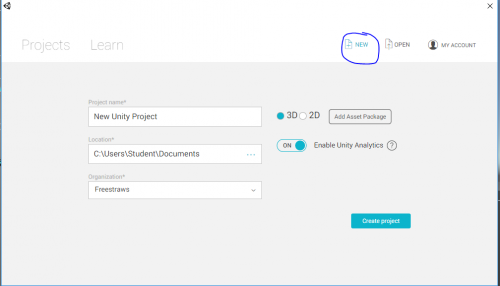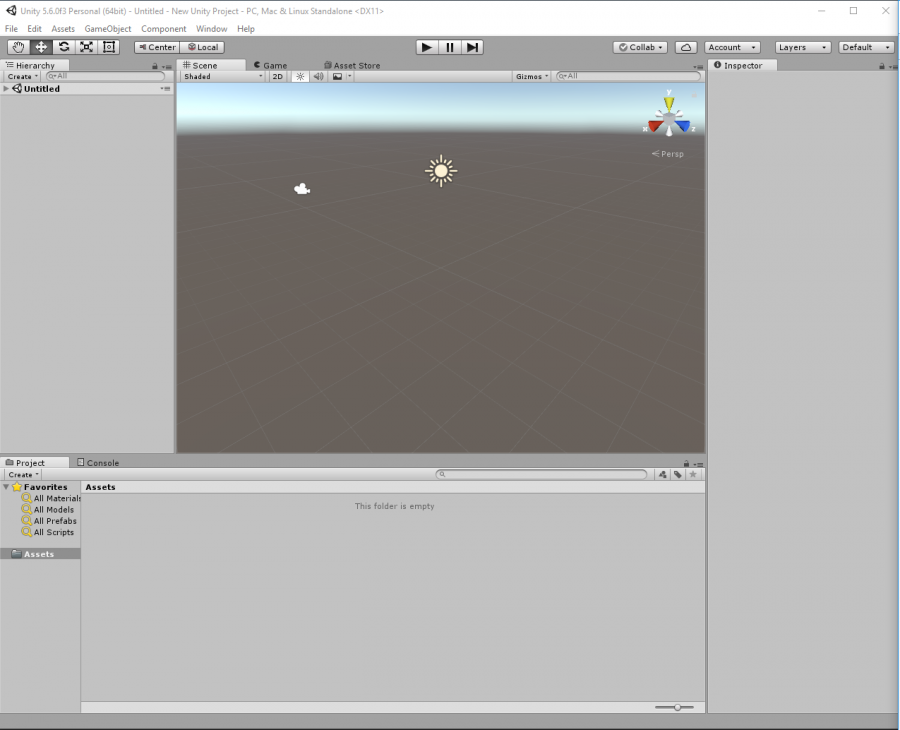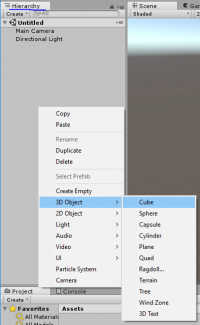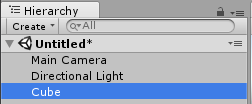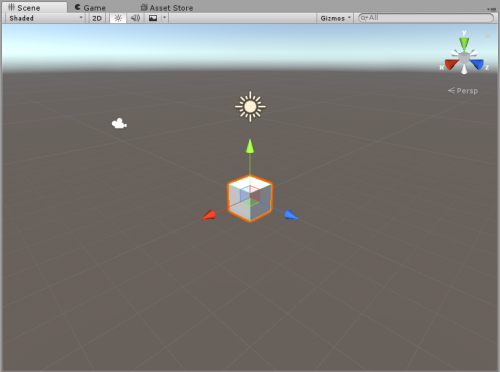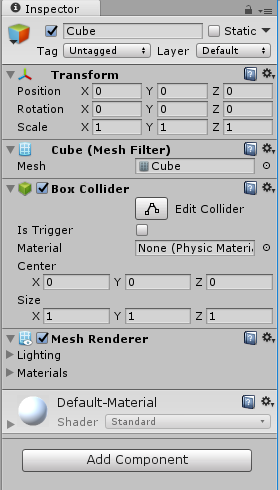Getting Started - No Scripting
No Scripting *yet*
Contents
starting a new world
Make an account at https://unity3d.com/, Unity will probably ask you to sign in before you start doing anything with their application. Once you've done that and signed in, you can go to 'New' and see something like this:
You don't need to worry about Unity Analytics or Asset Packages yet, and this guide is for making 3d games with the Unity engine, so keep that option checked. Press 'Create project'.
You should now be looking at something like this:
overview of editor and various tabs
There's a lot of UI here whose functionality may or may not seem obvious to you, so I will try to explain what each piece is for.
placing things in a scene
primitive 3d objects
2 ways to start to place primitive 3d shapes in a scene: Right-click in the Hierarchy tab (the other way is almost the same but starts with going to GameObject at the top of the screen instead of right-clicking),
Two things happen: one, a cube is added to the lists of objects in the hierarchy tab, and two, you should now see a cube in the Scene tab/viewer:
and if the cube has an orange outline, as shown in my scene tab, there should also be some new information in the Inspector tab:
Manipulating things in this tab is very important, for example it allows one to move, rotate, or scale something in specific ways. This can also be achieved in the Scene tab, when you have an object selected you can move, rotate, or scale it along the x, y, or z axis by adjusting the red, green, or blue axes respectively.
Some tips/ shortcuts for object manipulation:
- While in scene view and manipulating objects you may also find it useful to use some shortcuts: W gets the handles for position, E gets you to rotation manipulation, and R is for scaling.
- T is also a shortcut for object manipulation, the center O lets you move the object around wherever the mouse is, and you can also scale scale from corners or sides of things individually (instead of scaling from the center point of the object on the axis you're working with, which is how it usually works).
- Q just lets you move around the scene in the view, which can be very useful.
- F focuses in on whatever object you have selected.
- ctrl-D duplicates the selected object.
- Right-clicking and moving the mouse allows you to rotate your view in the scene. Ctrl middle-click allows translation of the camera position.
lights
To add a light to a scene, you would go to GameObject > Light and select one of the following kinds of lights to add:
- spotlight: Exactly like it sounds, it's a cone of light for which you can specify the spot angle, range, intensity, and color. There are of course other setting you can see in the inspector but those 4 are the most important. All of these can be adjusted based on variables with scripting. Light doesn't really go past the given range, even when you might feel like it should. Spot angle corresponds to how wide you want the cone of light to be. Intensity is a range of how bright the light is, 0 being that it emits no light, and 1 being the brightest it can possibly be.
- point light: Very similar to the spotlight except that instead of the light brightening an area in a cone shape, point lights are a sphere of light going from the center of the object to the specified radius in every direction.
- directional light: typically used for lights that affect an entire scene, like a sun or moon. There is no range for this type of light because it's meant to be global. If you want shadows, pick Shadow Type > Soft Shadows (or Hard Shadows, try them both and decide which on is better for your project). You usually only want to have 1, or 2 if you want something like a day/ night cycle, of these in a scene.
- area light: This one is not used nearly as often as the 3 above, but for lighting rooms evenly this can be an extremely useful tool.
A more thorough explanation of lighting in Unity.
